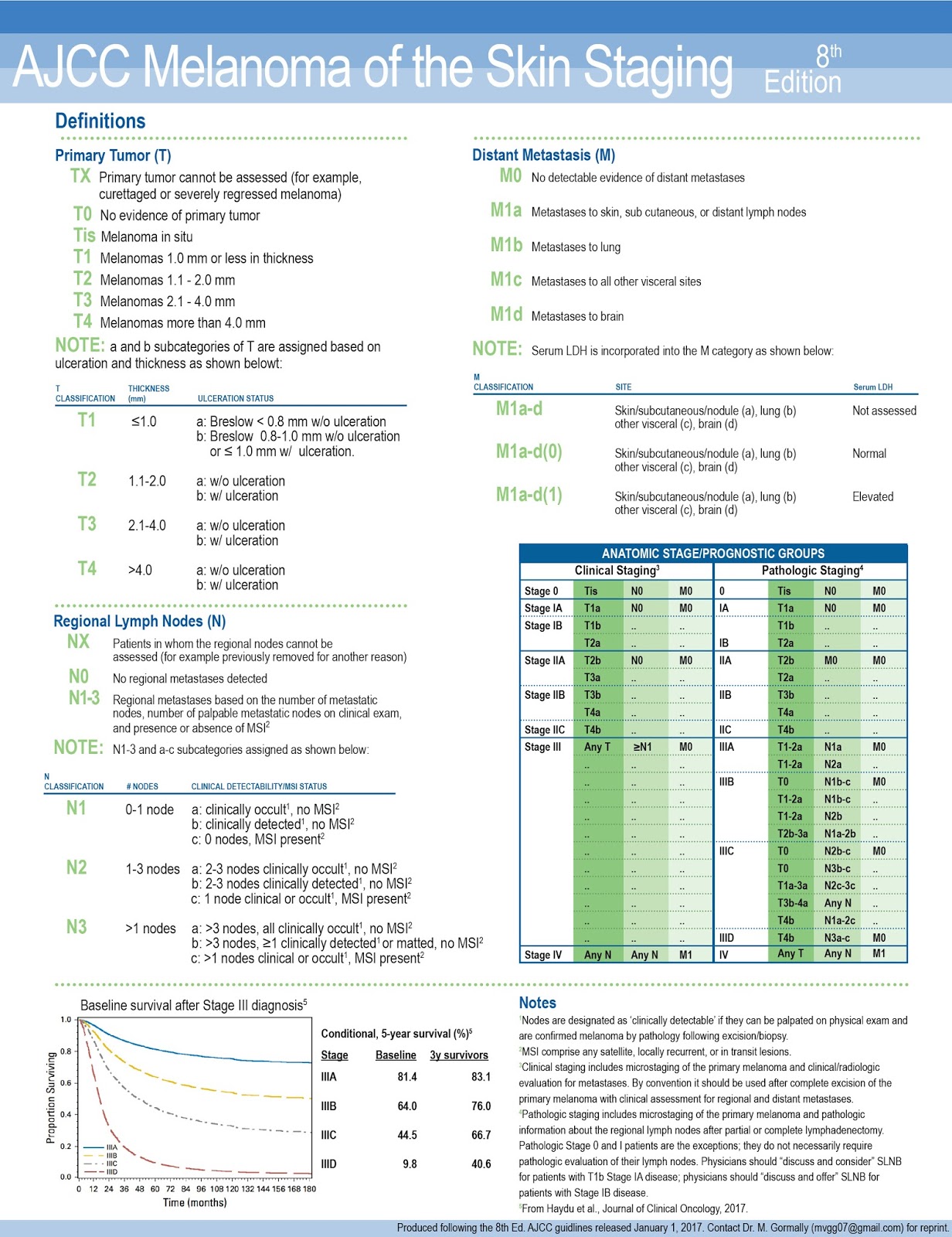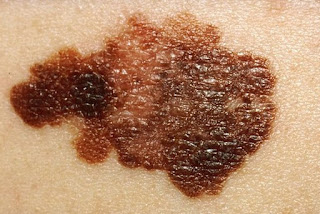Melanoma 101: Staging and Risk Factors

Melanoma 101: Staging and Risk Factors Knowing the risk factors and how melanoma is staged is vital to understanding this type of cancer. When a physician determines the stage of the cancer, often the staging determines the treatment, and how aggressive or invasive the treatments might be. All the while, the physician will start trying to reduce further risk of developing more melanomas. In this entry I will go over the staging of melanoma and the risk factors. The staging system that is typically used with melanoma is the American Joint Committee on Cancer (AJCC) system or known as TNM System. The TNM system is based on three main pieces of information, T meaning tumor, N meaning lymph nodes, and M meaning metastasis. The TNM system relies on those three pieces of information where then a chart assigns a number I-IV, and if applicable a letter. The T category is based on the assessment of the skin lesion or tumor. The depth of the lesion and whether it is ulcerated matters.

